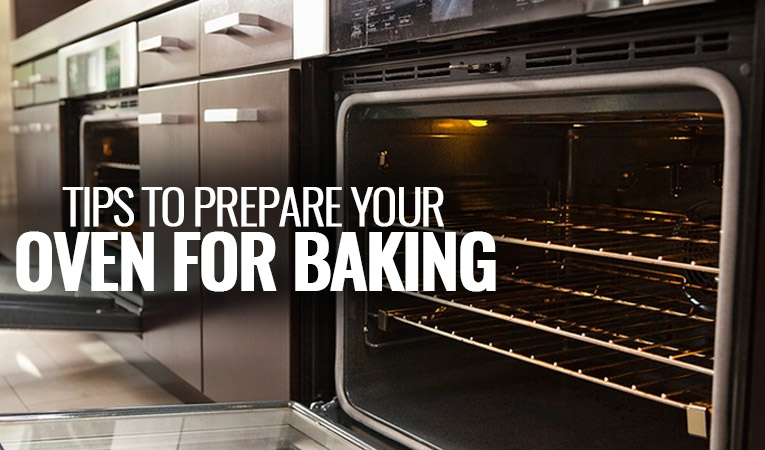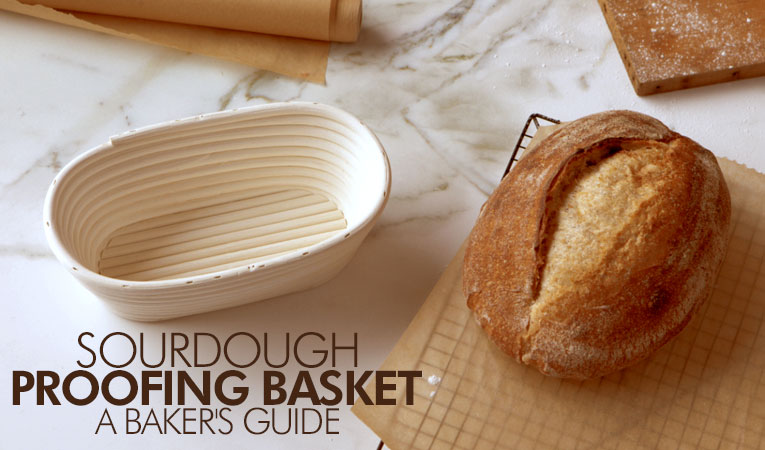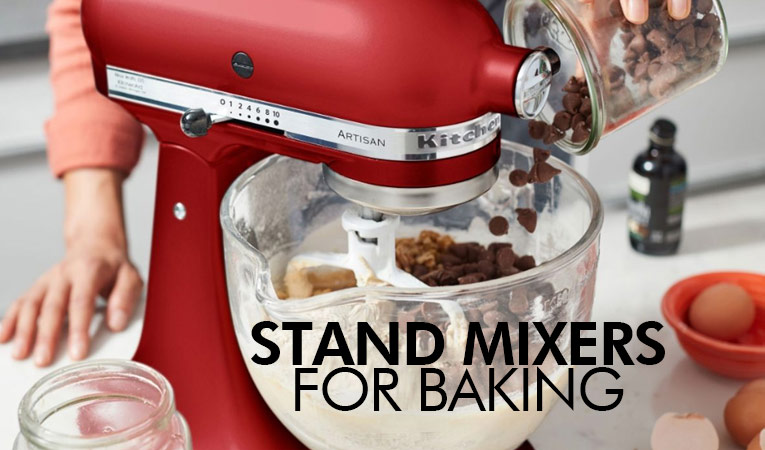How to Prepare Your Oven for Baking?
07-07-2025

Knowing how to prepare your oven for baking is one of the most important yet overlooked steps in achieving consistent and successful results in the kitchen. Many home bakers focus entirely on ingredients and techniques but fail to give the same attention to oven preparation, which often leads to disappointing outcomes such as uneven baking, dense textures, or collapsed centers. The oven is not just a tool that provides heat. It is the final environment where every element of a recipe comes together, and if it is not ready, even a well-measured batter can fall short.
A properly prepared oven ensures that heat is evenly distributed, the temperature is stable, and the baking surface is set to support your specific recipe. This is especially important for items that rely on precise timing and chemical reactions, such as cakes, cookies, and artisan breads. Without proper preheating, the structure may not develop correctly. If the rack is placed too high or low, the food may brown too quickly or remain undercooked in the center. Even a clean oven contributes to better baking by preventing smoke, odors, and uneven heat circulation.
This blog will walk you through everything you need to know about how to prepare your oven for baking. You will learn how to evaluate your oven type, set the right temperature, choose the best rack position, manage airflow and steam, and avoid common mistakes. Whether you are baking for your family or refining your technique as a home baker, following a structured oven preparation process can dramatically improve the texture, flavor, and appearance of everything you make.
Understand Your Oven: Basics First
To bake successfully, it is essential to understand how your oven functions. Each oven has unique characteristics that influence how evenly it heats, how quickly it recovers lost temperature, and how it handles airflow. These factors can affect how your bakes rise, brown, and finish. Before you prepare your oven for baking, take time to observe how your specific model behaves. Understanding this helps you make smarter decisions about temperature, rack placement, and recipe adjustments.
There are several key aspects to consider when learning how your oven works:
- Type of heat system : Conventional ovens heat from the top and bottom without a fan. This can lead to uneven zones where some areas bake faster than others. Convection ovens use a fan to circulate air, providing more uniform heat. While convection is great for even browning, it may require you to lower the recipe temperature slightly to avoid overbaking.
- Fuel source : Gas ovens tend to heat up faster and retain humidity, which benefits breads and moist dishes. However, they can develop hot spots that require careful tray rotation. Electric ovens provide consistent, dry heat, making them more suitable for delicate recipes such as pastries, cookies, and sponge cakes.
- Oven design : Whether you use a built-in oven, a countertop model, or a microwave convection combo, each design affects how heat flows inside. Reading your manual can help you identify useful features like grill mode, fan assist, or preheat indicators.
- Testing for hot spots : To check for uneven heat, place slices of white bread on a tray and bake at 180 degrees Celsius for five to seven minutes. The browning pattern will reveal hot and cool zones.
By identifying how your oven heats and performs, you take an important first step in learning how to prepare your oven for baking with better control and consistency.
Clean Your Oven Before Baking
A clean oven plays a key role in baking success. Built-up grease, old crumbs, and burnt food residue can affect how heat circulates and may cause unpleasant odors or smoke. Before you prepare your oven for baking, it is essential to remove anything that could interfere with the performance of your recipes. A well-maintained oven also helps ensure your food tastes as it should and cooks evenly without distraction from past spills or lingering smells.
To clean your oven effectively before baking, follow these simple but important steps:
- Remove all racks and trays : Take out every removable part from inside the oven and clean them separately. Soak trays in warm water with mild dish soap or baking soda if they are greasy or stained.
- Brush out loose debris : Use a dry cloth, small brush, or handheld vacuum to remove burnt crumbs, food particles, or ash from the bottom of the oven.
- Wipe the interior walls : Mix baking soda with water to form a paste and apply it to the inner surfaces. Let it sit for a few hours or overnight. Afterward, wipe with a damp cloth to remove the softened residue. This natural method is safe for food surfaces and effective at cutting through grime.
- Clean the oven door : Use vinegar and baking soda to gently scrub the glass window. Keeping the door clear allows you to monitor your bake without opening it unnecessarily.
- Avoid harsh chemical sprays : If using commercial cleaners, ensure the oven is fully ventilated and thoroughly rinsed before use.
Maintaining a clean oven is a vital part of how to prepare your oven for baking. It promotes even heat, protects flavor, and allows your baked goods to reach their full potential without interference from past cooking residues.
How to Prepare Oven Temperature Correctly
Baking relies heavily on accurate and consistent oven temperature. Even the best ingredients and techniques cannot deliver the right texture or rise if the heat is too low, too high, or fluctuates unexpectedly. Although most modern ovens have built-in digital displays, it is important to remember that the temperature shown may not always reflect the actual heat inside the oven cavity. Learning how your oven behaves at different settings is a key part of knowing how to prepare it for successful baking.
To ensure your oven reaches and maintains the correct temperature, follow these practical steps:
- Use an oven thermometer to check accuracy : Place an independent thermometer on the middle rack and preheat the oven to a common baking temperature such as 180 degrees Celsius. After 15 to 20 minutes, check if the thermometer matches the display. A variation of 5 to 10 degrees is normal, but larger gaps may require compensation.
- Preheat the oven fully before inserting your bake : Even after the oven signals it has reached the set temperature, wait another five to ten minutes. This allows the walls and racks to absorb and stabilize the heat, creating a more consistent environment.
- Avoid frequent door opening during baking : Each time the oven door opens, hot air escapes and the internal temperature drops. This can disrupt rising, especially for sensitive items like soufflés, cakes, and breads.
- Check temperature consistency across multiple bakes : If certain recipes consistently overbrown or undercook, you may need to adjust the default setting slightly up or down.
Being mindful of temperature behavior is an essential part of how you prepare your oven for baking. Once you understand your oven’s heating pattern, you can adapt with more confidence and achieve better, more reliable results.
Importance of Preheating the Oven
Preheating is one of the most important steps in baking. It ensures that the oven has reached a consistent internal temperature, which allows your ingredients to respond to heat correctly from the moment they are placed inside. Starting a bake in a cold or partially heated oven can cause poor rise, uneven texture, and unwanted spreading. Understanding how to control heat at the start of the baking process is essential, especially when you prepare your oven for baking with consistency in mind.
Ovens do not just heat the air inside. They also warm the walls, racks, and door surfaces, which contribute to the evenness of heat during baking. Simply relying on a display or preheat beep may not be enough. Giving your oven a few extra minutes helps stabilize the internal environment and leads to more predictable results.
Use these simple steps to ensure a proper preheat:
- Preheat early : Switch on the oven at the beginning of your preparation so it is ready when your ingredients are.
- Allow extra time : Wait five to ten minutes beyond the preheat signal to fully stabilize internal heat.
- Use a thermometer : Place an oven thermometer on the center rack to verify the actual internal temperature.
- Keep door closed : Avoid opening the oven during preheating to prevent heat loss and uneven conditions.
Even a perfectly mixed dough or batter will underperform if heat distribution is unstable at the start. By forming the habit of preheating correctly every time you prepare your oven for baking, you set the foundation for evenly cooked and reliably finished results.
Rack Positioning: Where You Bake Matters
Rack placement plays a crucial role in how heat reaches your food during baking. Even when the temperature is correct, poor positioning can lead to uneven browning, undercooked centers, or burned tops and bottoms. The location of your baking tray inside the oven determines how it receives heat from the top, bottom, and surrounding air. To prepare your oven for baking effectively, you must match the rack height with the needs of your recipe.
Use the following guidelines to help you position your racks correctly based on what you are baking:
- Middle rack : Ideal for most recipes including cakes, muffins, and cookies. Heat is evenly distributed around the tray, ensuring balanced browning and consistent results across the surface.
- Lower rack : Best used for bread, pizza, and crust-focused dishes. The closer proximity to the bottom element promotes strong base heat and encourages a firm, golden crust.
- Upper rack : Useful for quick browning or melting toppings. This position is often used for casseroles, lasagnas, or recipes that need a golden finish near the end.
- Two-rack setup : If baking two trays at once, place them on upper and lower thirds. Rotate trays midway through baking to promote even cooking and reduce the effect of hot spots.
- Avoid overcrowding : Leave space between trays and oven walls. Blocking airflow can prevent proper circulation, leading to uneven baking or extended cooking times.
Correct rack placement ensures that your food receives the heat it needs in the right way. As you prepare your oven for baking, always consider where your pan sits and how that position affects the result.
Baking Tools That Help Oven Preparation
Equipping your kitchen with the right tools not only improves your baking results but also helps you prepare your oven for baking more accurately. These tools enhance heat consistency, prevent guesswork, and support better control over how your recipes perform inside the oven. Knowing how to prepare your oven for baking includes understanding how each tool contributes to the overall baking process, from temperature accuracy to surface heat retention.
Here are some essential tools that make oven preparation more effective:
- Oven thermometer : An independent thermometer helps verify the actual internal temperature of your oven, which is often different from the digital display. It is essential for checking accuracy when baking sensitive recipes that require precision.
- Baking stone : This thick surface absorbs and retains heat evenly, which is especially useful when baking bread or pizza. It creates a consistent baking environment and supports a better crust by mimicking the effects of a stone oven.
- Dutch oven : A preheated Dutch oven traps steam, promotes oven spring, and creates a perfectly crusted loaf. It is highly recommended for sourdough or rustic bread and is a valuable tool for controlled oven preparation.
- Light tray : Light-colored baking trays reflect heat gently, reducing the risk of overbrowning. They are useful for cookies, pastries, and delicate bakes that benefit from an even, moderate baking temperature across the surface.
- Silicone mat : A reusable silicone baking mat provides a non-stick surface and promotes even heat transfer. It also keeps trays clean and supports better airflow underneath baked goods during oven use.
Each of these tools plays a role in helping you prepare your oven for baking more effectively, ensuring consistency and better results with every batch.
How to Handle Steam and Humidity?
Steam plays a powerful role in baking, especially when it comes to achieving proper rise and crust in bread. Managing moisture inside the oven is often necessary when baking artisan loaves, croissants, or other items that require controlled expansion and shine. Understanding how to handle steam is part of learning how to prepare your oven for baking more advanced recipes. While steam is not required for all baking types, using it correctly where needed can significantly improve quality and texture.
Here are practical methods to introduce and manage steam during baking:
- Water tray : Placing a metal tray filled with boiling water on the bottom rack creates moisture in the oven. This method helps develop a glossy crust and supports oven spring in rustic bread and sourdough.
- Spray bottle : Misting the oven walls just after loading the bread quickly adds steam. This method works well in home ovens, but be sure to avoid spraying near the oven door glass or heating elements.
- Dutch oven : Baking inside a covered Dutch oven traps natural steam released from the dough. It is one of the most effective ways to create the right humidity for perfect crust without extra tools or water.
- Wet towels : Placing wet rolled towels in a hot tray produces steam during the first phase of baking. This method is especially helpful for ovens that lose moisture quickly or lack steam injection features.
- Ice cubes : Dropping ice cubes into a hot pan placed on the lower rack can create a burst of steam. This technique works best during the first ten minutes of baking and supports strong expansion.
By understanding when and how to apply these methods, you can prepare your oven for baking in a way that enhances structure, crust, and overall finish.
Watch for Hot Spots in Your Oven
Even the most reliable ovens can have areas that heat more or less than others. These uneven zones, known as hot spots, often lead to inconsistent baking results. Cookies may brown unevenly, cakes might rise more on one side, or bread may develop an uneven crust. Identifying and managing these temperature variations is an important step as you prepare your oven for baking, especially if you are aiming for uniform texture and color.
Use the following methods to test for and correct hot spots in your oven:
- Bread test : Place slices of white bread across a baking tray and bake at 180 degrees Celsius for five to seven minutes. Darker slices indicate hotter zones, helping you visually map the oven's heat pattern.
- Rotate trays : Halfway through baking, turn your trays 180 degrees to expose all sides of your food to the oven’s varying temperatures. This simple habit can prevent one side from overbaking or burning.
- Rack placement : Try adjusting the position of your baking rack to see where heat is more balanced. Sometimes, placing trays slightly off-center can help avoid hot spots and support more even airflow.
- Avoid overcrowding : Too many items in the oven can block airflow and worsen uneven heating. Leave space between trays and around oven walls to maintain consistent circulation during the bake.
- Use convection : If your oven includes a convection setting, use it when appropriate to circulate hot air and reduce the effect of localized heat zones, especially when baking multiple trays at once.
By identifying how your oven heats and adjusting your approach, you will be better equipped to manage inconsistencies and prepare your oven for baking with greater accuracy and control.
Recipe-Specific Oven Prep Tips
Different recipes require different oven conditions. A single approach to heat, rack position, or timing will not produce ideal results across all baking categories. By learning how to prepare your oven for baking based on the specific type of food you are making, you can prevent common problems such as uneven texture, soggy bottoms, or collapsed centers. From steam for artisan bread to low airflow for pastries, each bake benefits from a unique oven setup.
Here are focused tips to help you prepare your oven for baking success across different recipe types:
- Sponge and layer cakes : Preheat the oven fully and use the middle rack for even heat. Avoid convection settings and resist opening the oven door during the first half of baking to protect structure and rise.
- Cookies and shortbread : Bake one tray at a time using a light-colored sheet. Position it in the center and rotate if needed. Even spacing and airflow are key to avoid uneven browning and spreading.
- Sourdough and crusty loaves : Use a preheated Dutch oven or baking stone and introduce steam during the first ten minutes. This helps create a crisp crust and supports strong oven spring for rustic bread.
- Pizza and flatbreads : Preheat for at least 30 minutes with a stone or steel in place. Bake on the lower rack for maximum base heat, which helps achieve a crisp, golden bottom.
- Puff pastry and croissants : Use a stable, non-convection setting and the center rack. High heat at the start supports puffing, but consistent temperature prevents burning or collapse.
Tailoring your approach to each recipe helps you prepare your oven for baking in a way that enhances flavor, structure, and overall quality.
Avoid These Common Oven Mistakes
Baking requires more than just good ingredients and an accurate recipe. Many baking issues result from poor oven habits that go unnoticed. Even small oversights like incorrect rack positioning or skipping the preheat step can affect texture, structure, and flavor. By learning how to prepare your oven for baking and avoiding common mistakes, you can prevent disappointing outcomes and bake with greater consistency.
Here are some of the most frequent oven-related mistakes and how to correct them:
- Skipping preheat : Starting to bake before your oven is fully preheated leads to uneven results. Ingredients may not react properly, which can cause poor rise, dense textures, or irregular surface color.
- Relying on display : Trusting only your oven’s digital reading without verifying it can be misleading. Built-in sensors are not always accurate, especially in older ovens or those with uneven heating zones.
- Opening the door : Frequently opening the oven door during baking lets heat escape and disrupts internal stability. This sudden temperature drop can cause delicate items like cakes to collapse or cook unevenly.
- Incorrect rack use : Using the wrong rack height for your recipe affects heat exposure. Food may brown too quickly on top or fail to bake through the center if not positioned correctly.
- Overcrowding trays : Placing too many pans or dishes inside at once blocks airflow. This can result in extended baking times, uneven doneness, and increased chances of undercooked centers or burnt edges.
By understanding these errors and taking small corrective steps, you can prepare your oven for baking more effectively and reduce the chances of failure, no matter what recipe you choose.
Final Checklist: How to Prepare Oven in 5 Quick Steps
Before you place anything into the oven, it is helpful to follow a simple and consistent routine. These quick steps will help reduce common mistakes and ensure that your oven is set up correctly for any type of recipe. Whether you are baking a soft sponge cake or a crisp artisan loaf, taking a few moments to prepare your oven for baking can significantly improve texture, appearance, and overall results.
Use the checklist below to streamline your oven preparation process:
- Clean the interior : Remove crumbs, grease, and burnt residue from previous use. A clean oven prevents unwanted smoke, promotes even heating, and eliminates odors that could affect the flavor of your bake.
- Set rack position : Adjust the rack based on the recipe. Use the center rack for cakes and cookies, the lower rack for pizza and bread, and avoid touching oven walls for better airflow.
- Verify temperature : Use an oven thermometer to confirm that your oven reaches and holds the correct baking temperature. This extra step helps avoid underbaking or overbaking due to inaccurate internal readings.
- Allow full preheat : Even after the oven signals it is ready, wait an additional five to ten minutes. This ensures that the internal walls and racks are evenly heated before baking begins.
- Prepare bakeware and tools : Line trays with parchment, preheat stones if needed, and gather everything before loading. These habits help you stay organized as you learn how to prepare your oven for baking with confidence.
Following this checklist every time builds good habits and helps deliver consistent, bakery-quality results.
How to Prepare Oven for First-Time Use
If you have just purchased a new oven or are using a recently installed one, it is important to prepare it before cooking or baking anything. Factory coatings, dust, and packaging residue must be cleared to prevent odors, smoke, or contamination. Learning how to prepare your oven for baking the first time ensures that your future bakes start in a clean, safe, and neutral environment. This one-time process takes very little effort but makes a big difference in performance and food safety.
Follow these essential steps to safely prepare your oven for baking for the first time:
- Read the manual : Go through the instruction booklet provided by the manufacturer. This helps you understand key features, recommended settings, and any specific pre-use cleaning or burn-in instructions for your oven model.
- Remove packaging materials : Check inside the oven for cardboard, plastic, zip ties, or protective films. Remove everything, including racks, manuals, and trays, to avoid melting or burning when the oven is turned on.
- Wipe interior surfaces : Use a soft cloth with warm water or mild vinegar solution to clean oven walls, racks, and the door. This removes dust, manufacturing residue, or grease applied during assembly and transport.
- Run a burn-in cycle : Set the oven to a high temperature, around 200 to 250 degrees Celsius, and let it run empty for 30 to 60 minutes. Keep windows open for ventilation during this process.
- Allow to cool and wipe again : Once the oven cools down, wipe all surfaces again. After this step, the oven is ready for actual baking and future recipes.
Completing this setup process ensures your appliance is clean, odor-free, and ready to perform reliably every time you prepare your oven for baking.
Frequently Asked Questions (FAQs)
Oven preparation can raise many questions, especially for home bakers who want consistently good results. Knowing how and when to follow certain steps can take some time to learn. Below are answers to common questions that help clarify how to prepare your oven for baking more effectively, so you can bake with more confidence and fewer surprises.
- How long should I preheat my oven?
Most ovens take about 10 to 15 minutes to reach the desired temperature, but even after the preheat signal, it is recommended to wait five to ten more minutes. This ensures the oven walls, racks, and air have stabilized. Waiting a little longer improves baking consistency. - Do I need an oven thermometer if I trust my oven's display?
Yes, using a standalone oven thermometer is still beneficial. Even modern ovens can have inaccurate built-in sensors. A thermometer placed inside provides a more reliable reading of the actual baking environment and helps avoid under or overbaking. - Is steam necessary for every bake?
No, steam is mainly helpful for recipes like rustic breads, baguettes, or croissants. It is not needed for cakes, cookies, or muffins. Introducing steam when not required can sometimes change the structure of delicate batters. - Why does my cake rise unevenly?
Uneven rise is often caused by hot spots, wrong rack positioning, or sudden temperature changes. Make sure the oven is fully preheated, avoid opening the door too early, and place the pan in the center of the oven. - Can I bake two trays at once?
Yes, but leave enough space between trays and use the upper and lower thirds of the oven. Rotate trays midway to promote even heat exposure and better results.
Understanding these small details will help you prepare your oven for baking across many different recipes with fewer issues.
Conclusion
Consistent and professional-quality baking does not begin with mixing ingredients or choosing a recipe. It starts long before that, with a well-prepared oven. Understanding how to prepare your oven for baking helps eliminate many of the common issues that can affect rise, texture, and doneness. From accurate temperature control and correct rack placement to managing steam and addressing hot spots, each step you take before placing your tray inside the oven plays a direct role in the outcome of your bake.
Oven preparation is not a one-time effort but a consistent habit that improves with practice. Whether you are baking bread that needs a hot base and steam or delicate pastries that rely on precise and stable heat, the principles remain the same. A clean oven, properly positioned racks, fully stabilized temperature, and the right tools can help turn your everyday baking into something more predictable and rewarding.
If you are using a new oven or an unfamiliar model, taking time to understand its features will save you from guesswork and wasted ingredients. Simple techniques like using a thermometer, rotating trays, or adjusting rack height based on the recipe can significantly improve your results. These methods are especially helpful when you prepare your oven for baking under different conditions or across various styles of recipes.
By applying the steps covered in this guide, you not only improve your final bake but also build a stronger understanding of how your oven truly works. Great baking is a combination of skill, attention, and preparation. When you take the time to set up your oven correctly, everything that follows becomes easier, more reliable, and far more enjoyable.




